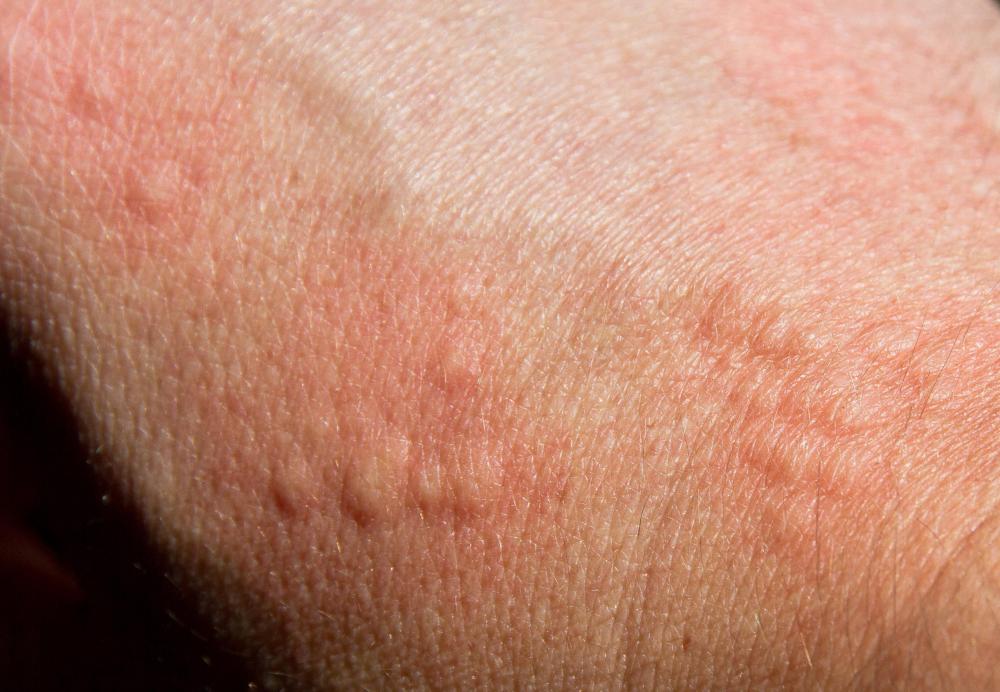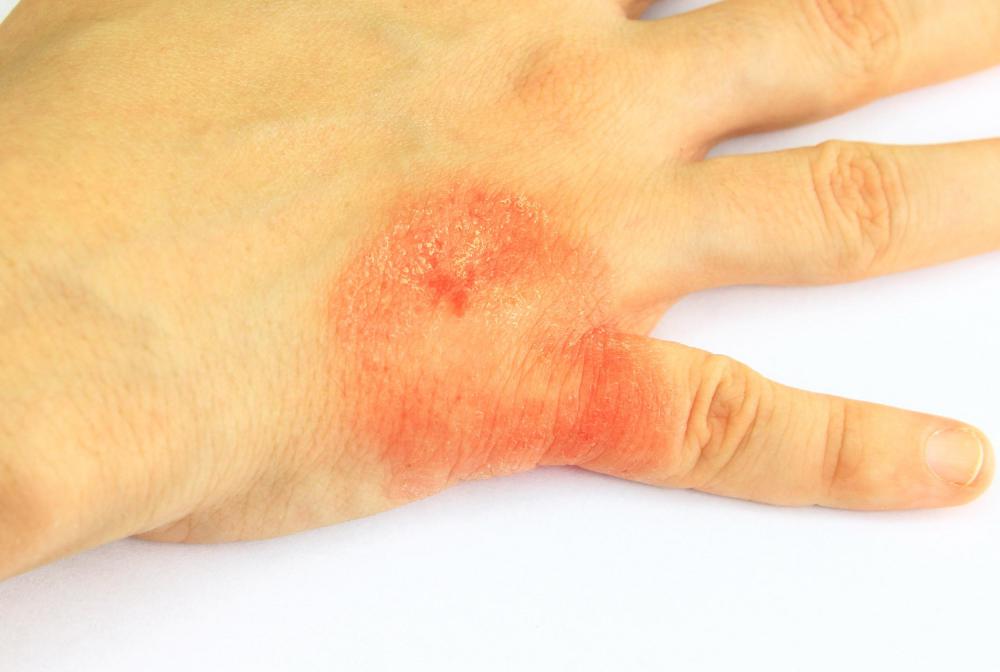At WiseGEEK, we're committed to delivering accurate, trustworthy information. Our expert-authored content is rigorously fact-checked and sourced from credible authorities. Discover how we uphold the highest standards in providing you with reliable knowledge.
What are Milk Allergy Symptoms?
Milk allergy symptoms can vary from individual to individual. Symptoms can occur quickly after drinking milk or take up to a few hours to manifest. A milk allergy can develop suddenly where none existed before. Some infants may be so sensitive to milk and milk products that they may have an allergic reaction to minute amounts of cow's milk passed through breast milk from products ingested by the nursing mother.
Milk allergy symptoms can oftentimes occur immediately after ingesting milk. These symptoms include: hives, vomiting, wheezing, and shortness of breath. Some milk allergy symptoms may take longer to present, such as abdominal cramps, diarrhea, coughing, runny nose, skin rash, and loose stools that may or may not contain blood and/or mucus. A physician should be consulted immediately if any of these symptoms arise.

Milk allergy and lactose intolerance, also called milk protein intolerance, are not the same condition and the terms should not be used interchangeably. An allergy by definition involves the immune system, and milk allergy is no exception. Lactose intolerance and milk allergies cause a different set of symptoms and require different treatment. The most common symptoms of lactose intolerance are digestive distress including bloating, gas, and diarrhea soon after drinking milk or eating a milk-based product such as cheese or ice cream.

A true allergic reaction to milk can cause anaphylaxis, which is a life-threatening immune system response that can constrict breathing passages. If a person has even a mild reaction to milk, their physician should be notified immediately. Tests can be done to determine if it is indeed a milk allergy, and then measures can be taken to ensure future incidents are avoided. Anaphylaxis, also commonly called anaphylactic shock, is an extremely serious condition that must be treated with epinephrine. Symptoms of anaphylaxis are: swollen throat, difficulty breathing, shock, rapid pulse, quick and severe drop in blood pressure, dizziness, and even complete loss of consciousness.

Milk allergy symptoms can run from mild to severe. Like all food allergies, a milk allergy is caused by a malfunction of the immune system that misidentifies specific milk proteins as harmful to the body. The body in turn begins to produce immunoglobulin E (IgE) antibodies to neutralize the protein it perceives as the allergen. The next time these milk proteins are encountered, the IgE antibodies recognize them. This signals the immune system to release histamines and other chemicals, which display as allergic symptoms. Histamines are largely responsible for the most common allergic reactions like runny nose, itchy and watery eyes, hives, nausea, breathing difficulties, and anaphylaxis.

Casein and whey are the proteins most often at the root of milk allergies. Casein is in the curd, or solid part, of milk when it curdles, while whey is in the liquid component of milk that remains liquid after curdling. These proteins also appear in many milk-based products, although sometimes only one or the other is present. A person allergic to milk may be allergic to one or both of these proteins. If milk allergy symptoms are determined to indicate a true milk allergy, the only surefire way to prevent an allergic response is to avoid milk and milk products entirely.
AS FEATURED ON:
AS FEATURED ON:
















Discussion Comments
Sometimes people do have both symptoms of milk allergy and lactose intolerance. Someone with one condition or the other should probably avoid dairy products as much as they can.
Thank you. I may have a milk allergy. this week, my throat swelled. I went to the doctor and had low blood pressure of 105/60. They checked for strep, etc., but did not seem to think anything was wrong. Next time, I'll ask about the possibility of a milk allergy. A health care nurse expressed some concern when I telephoned for advice. I was told to take benadryl and it seemed to work.
Post your comments